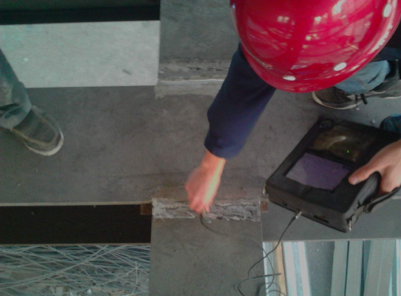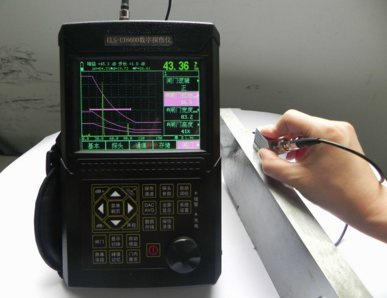Jiangsu Huatal Cooling Technology., Ltd.
Complimentary Samples For You And Technical Consultation At Your Convenience
To detect cracks or defects in metal materials or components, we commonly use flaw detection methods include X-ray flaw detection, ultrasonic flaw detection, magnetic powder flaw detection, permeability flaw detection, eddy current flaw detection and γ-ray flaw detection. All these physical flaw detection methods are non-destructive detection without any damage to the material or components, or chemical changes. The principle is to use the sound, light, magnetic and electrical properties of the material to detect whether there are defects or non-uniformity in the tested object without damaging or affecting the performance of the tested object, and to give information such as defect size, location, nature and quantity.
Non-destructive detection methods have the following characteristics.
I. It is non-destructive, because it will not damage the performance of the tested object when testing.
II. It is comprehensive. Since the detection is non-destructive, 100% comprehensive detection can be conducted on the tested object when necessary, which is impossible for destructive detection.
III. It is Integrity, destructive testing generally applies only to testing for raw materials, such as widely used in mechanical engineering such as tensile, compression, bending, destructive testing is aimed at making use of raw materials.
Therefore, it can not only test the raw materials used in manufacturing, each intermediate process, until the final product, but also test the equipment in service.

There are several flaw detection methods for closed cooling tower:
I. Flaw detection with Magnetic powder
Magnetic powder inspection is a method used to detect surface and near-surface defects of ferromagnetic materials. When the workpiece is magnetized, if there is a defect on the surface or near the surface, the magnetic flux leakage is generated due to the increase of the magnetic resistance at the defect, forming a local magnetic field, the magnetic powder will show the shape and location of the defect here, so as to judge the existence of the defect.
It basically has the following kinds;
According to the different magnetization direction of the workpiece: circumferential magnetization method, longitudinal magnetization method, composite magnetization method and rotating magnetization method.
According to the different magnetization current: dc magnetization method, half wave dc magnetization method, and ac magnetization method.
According to the different formulations of magnetic powder used in flaw detection: dry powder method and wet powder method.
But it also has flaws, it is difficult to find the defects of porosity, ballast and hidden in the depth of weld.

Causes of magnetic marks:
Local cold, hardening, magnetic mark aggregation caused by material magnetic permeability change;
Magnetic powder accumulation at the interface of two different materials;
Carbide layer structure segregation;
Magnetic marks at the abrupt change of part section size;
The magnetization current is too high, because of metal streamlines caused by magnetic traces;
The surface of the workpiece is not clean or greasy spots caused by magnetic marks;
That's all for today, and we'll talk about some other flaw detection methods next time. Jiangsu huatal has been providing the best quality of closed cooling tower and focusing on professional cooling tower design we use imported magnesium aluminum zinc plating steel sheets, which passed flaw detection, reliable for outer shell.
Copyright © 2019 Jiangsu Huatal Cooling Technology Co., Ltd. | All Rights Reserved
Hello, please leave your name and email here before chat online so that we won't miss your message and contact you smoothly.